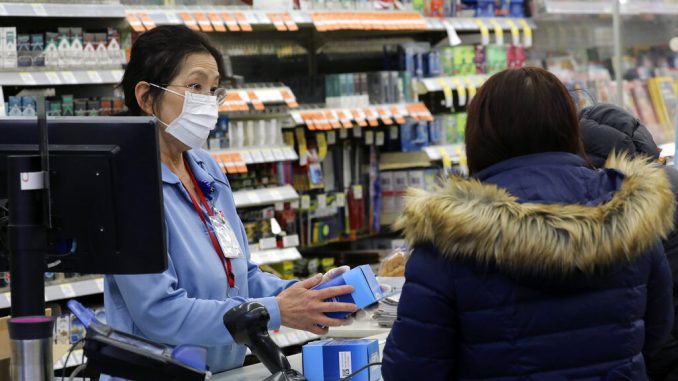
WASHINGTON, D.C. — U.S. health officials offered a reality check Tuesday about the scary new virus from China: They’re expanding screenings of international travelers and taking other precautions but for now, they insist the risk to Americans is very low.
“At this point Americans should not worry for their own safety,” Health and Human Services Secretary Alex Azar told reporters Tuesday.
China has confirmed more than 4,500 people with the respiratory illness, which in severe cases can cause pneumonia, with dozens more counted in other countries. In the U.S. so far, there are five confirmed patients, all of whom had traveled to the hardest-hit part of China — and no sign that they have spread the illness to anyone around them.
Still, “this is a very fast-moving, constantly changing situation,” Azar added.
Flanked by the government’s top infection specialists, Azar listed the biggest unanswered questions of the outbreak and tried to tamp down some of the fear and speculation provoked by China’s rising toll:
—How deadly is this new virus? China’s death toll has passed 100 but the first patients counted in an outbreak “are naturally the most severe cases” and “skew our understanding,” Azar cautioned. Over time, if doctors find many more people had just a mild, cold-like illness, the death rate will change.
—How easily does it spread? One way to measure that is an estimate of how many people could catch an infection from one contagious patient. Some reports have suggested that number might be between 1.5 and 3.5 for the new coronavirus, but Azar stressed it’s too soon to know. For comparison, one patient with measles could spread it to 12 to 18 others, he added.
—What about silent carriers? Reports from China suggest some people may have spread the virus before showing symptoms. And Germany on Tuesday said a man with the virus near Munich never traveled to China or had close contact with anyone showing symptoms. Instead, he may have been infected by a coworker from China who briefly visited for a company training session and didn’t report feeling ill until her flight home. Later authorities confirmed three additional cases from the German company, all connected to the first.
Some viruses, such as the flu, can spread before symptoms are obvious. But there’s no evidence it’s happened with the new virus in the U.S., where health officials are checking contacts of the sick. And epidemics are driven by the openly sick, said Dr. Anthony Fauci, infectious disease chief of the National Institutes of Health.
Still, the Centers for Disease Control and Prevention wants to send its own scientists to visit China for a first-hand look try to answer those questions. On Tuesday, the World Health Organization said it hopes to send in international experts soon.
Without a vaccine or treatments, the world is depending on tried-and-true public health steps to tamp down the outbreak — finding the infected early and isolating them to stem the spread.
In the U.S., the CDC is beefing up its checks of incoming travelers. It already had been screening for illness among passengers arriving from the epicenter of China’s outbreak at five U.S. airports. But people who’ve visited other parts of China still may be arriving, with stops in other places first. Now, CDC is sending extra staff to other “quarantine stations” to screen arrivals at a total of 18 airports around the country and at two border crossings, in El Paso, Texas, and San Diego.
The State Department has also chartered a plane to evacuate diplomats from the U.S. Consulate in Wuhan, the city where the outbreak started, and some other Americans.
Asked if those evacuees would be quarantined, Azar said there will be doctors on the flight to check all the passengers so health officials can decide if additional steps are needed.
With an incubation period of anywhere from two to 14 days, travelers may arrive showing no symptoms. But CDC’s Dr. Nancy Messonnier said the screenings are an opportunity to educate travelers that if they start feeling sick — with a fever, cough or flu-like symptoms — after returning from an outbreak zone, they should contact their doctor. That’s exactly what the first U.S. patients did.
Azar said he has directed $105 million to fight the outbreak. Among the next steps, the CDC developed a test for the virus and aims to make it usable by state health departments, to speed diagnosis of suspected cases. Research also is under way to develop a vaccine or treatment.
Airport screenings were initially done in New York, Los Angeles, San Francisco, Chicago and Atlanta. That has been expanded to Anchorage, Alaska; Boston; Dallas; Detroit; El Paso, Texas; Honolulu; Houston, Miami, Minneapolis; Newark, New Jersey; Philadelphia; San Diego; Seattle; Washington, D.C. (Dulles); and San Juan, Puerto Rico.



